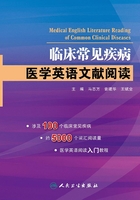
上QQ阅读APP看书,第一时间看更新
3. Gallstones 胆结石
Gallstones form in the gallbladder, a small organ located under the liver. The gallbladder aids in the digestive process by storing bile and secreting it into the small intestine when food enters. Bile is a fluid produced by the liver and is made up of several substances, including cholesterol, bilirubin, and bile salts.
What are gallstones?
Gallstones are pieces of solid material that form in the gallbladder. These stones develop because cholesterol and pigments in bile sometimes form hard particles.
The two main types of gallstones are:
●Cholesterol stones:
Usually yellow-green in color, approximately 80% of gallstones are cholesterol stones.
●Pigment stones:
These stones are smaller and darker and are made up of bilirubin.
What causes gallstones?
Several factors may come together to create gallstones, including:
●Genetics
●Body weight
●Decreased motility (movement) of the gallbladder
●Diet
Gallstones can form when there is an imbalance in the substances that make up bile. For instance, cholesterol stones may develop as a result of too much cholesterol in the bile. Another cause may be the inability of the gallbladder to empty properly.
Pigment stones are more common in people with certain medical conditions, such as cirrhosis (a liver disease in which scar tissue replaces healthy liver tissue) or blood diseases such as sickle cell anemia.
What are the risk factors for gallstones?
Risk factors for getting gallstones include:
●Genetics. If other people in your family have had gallstones, you are at increased risk of developing gallstones.
●Obesity. This is one of the biggest risk factors. Obesity can cause a rise in cholesterol and can also keep the gallbladder from emptying completely.
●Estrogen. Estrogen can increase cholesterol and reduce gallbladder motility. Women who are pregnant or who take birth control pills or hormone replacement therapy have higher levels of estrogen and may be more likely to develop gallstones.
●Ethnic background. Certain ethnic groups, including Native Americans and Mexican-Americans, are more likely to develop gallstones.
●Gender and age. Gallstones are more common among women and older people.
●Cholesterol drugs. Some cholesterol-lowering drugs increase the amount of cholesterol in bile, which may increase the chances of developing cholesterol stones.
●Diabetes. People with diabetes tend to have higher levels of triglycerides (a type of blood fat), which is a risk factor for gallstones.
●Rapid weight loss. If a person loses weight too quickly, his or her liver secretes extra cholesterol, which may lead to gallstones. Also, fasting may cause the gallbladder to contract less.
What are the symptoms of gallstones?
Gallstones often don't cause symptoms. Those that don't are called “silent stones.”A person usually learns he or she has gallstones while being examined for another illness.
When symptoms do appear, they may include:
●Pain in the upper abdomen and upper back. The pain may last for several hours.
●Nausea
●Vomiting
●Other gastrointestinal problems, including bloating, indigestion and heartburn, and gas
How are gallstones diagnosed?
If the doctor suspects you have gallstones, he or she will do a physical exam and may perform various other tests, including the following:
●Blood tests:
Blood tests may be given to check for signs of infection or obstruction and/or to rule out other conditions.
●Ultrasound:
This procedure produces images of various parts of the body and can be used to identify gallstones.
●CAT scan:
This test uses specialized X-rays to create cross-section images of organs and body tissues.
●Cholescintigraphy (HIDA scan):
This test can determine whether the gallbladder is contracting correctly. A radioactive material is injected into the patient and makes its way to the gallbladder. The technician can then observe the movement of the gallbladder.
●Endoscopic ultrasound:
This test combines ultrasound and endoscopy to look for gallstones.
●Endoscopic retrograde cholangiopancreatography (ERCP):
The doctor inserts an endoscope through the patient's mouth down to the small intestine and injects a dye to allow the bile ducts to be seen. The doctor can then remove gallstones that have moved into the ducts.
How are gallstones treated?
Gallstones are usually treated with surgery to take out the gallbladder. The traditional operation is called an open cholecystectomy. A newer procedure, called laparoscopic cholecystectomy, is less invasive, has fewer complications, and is used more often.
●Laparoscopic cholecystectomy:
During this procedure, instruments, a light, and a camera are passed through several small incisions in the abdomen. The surgeon views the inside of the body by looking at a video monitor. This procedure is used in approximately 80% of gallbladder removals. After the surgery, the patient spends the night in the hospital.
●Open cholecystectomy:
This is a more invasive procedure in which the surgeon makes incisions in the abdomen to remove the gallbladder. The patient stays in the hospital for a few days after the surgery.
If gallstones are in the bile ducts, endoscopic retrograde cholangiopancreatography may be used to find and remove them before or during gallbladder surgery.
Are there any nonsurgical treatments for gallstones?
If you have a medical condition and the doctor feels you shouldn't have gallstone surgery, he or she may prescribe the medications Actigall or Chenix. These drugs work by dissolving cholesterol stones. Mild diarrhea is a side effect of both medications.
The downside of using either medication is that you may have to take it for years to completely dissolve the stones. In addition, the stones may come back after you stop taking the drug.
中英文注释
关键词汇
bile [bail] n.胆汁
bilirubin [,bili'ruːbin] n.胆红素
cholesterol [kə'lestərɒl] n.胆固醇
cirrhosis [si'rəʊsis] n.肝硬化
estrogen ['estrədʒən] n.雌性激素
gallbladder ['gɔːl,blædə] n.胆囊
genetics [dʒi'netiks] n.遗传
nausea ['nɔːsiə; -z-] n.恶心
obesity [ə(ʊ)'biːsiti] n.肥胖
triglyceride [trai'glisəraid] n.甘油三酯
vomiting ['vɔmitiŋ] v.呕吐
主要短语
bile salts 胆盐
body weight 体重
cholesterol stones 胆固醇结石
endoscopic ultrasound 超声内镜
endoscopic retrograde cholangiopancreatography (ERCP) 内窥镜逆行胆管造影
laparoscopic cholecystectomy 腹腔镜胆囊切除术
open cholecystectomy 开腹胆囊切除术
pigment stones 胆色素结石
sickle cell anemia 镰状细胞贫血
the digestive process 消化过程
付永良 马志方